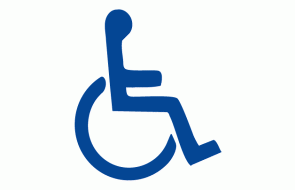Understand the label "Tourism and Handicap"

The Tourisme et Handicap brand is a response to the demand of people with disabilities who want to be able to choose their holidays and their leisure in complete freedom. The brand provides a guarantee of an efficient reception adapted to the essential needs of disabled people

Hearing impairment
-
The main difficulty is to perceive, hear and decipher sound messages including speech.
-
The loss of stereophony no longer makes it possible to locate the origin of the noise. The deaf person must be distinguished from the deaf person.
-
The deaf person: is a person born deaf, or who has lost hearing. She does not hear speech and can only be helped by visual techniques (sign language for example).
-
The hard-of-hearing person: has an audible auditory residue. It can benefit from sound aids (hearing aids, magnetic loop ...) and use the technique of lip reading..
Mental Handicap
-
Mental disability is a handicap of understanding, communication and decision..
-
People with mental disabilities find it difficult to situate themselves in space and time. This requires appropriate compensation, which is essentially a human aid to which technical assistance can be added.
-
It is important to emphasize that the illiterate or the illiterate or not mastering the language of the country, the children, certain old people, will have the same mode of operation as the person having difficulties of understanding and communication; that is, they will be looking for simplified visual and sound information
Motor Disability
-
Motor disorders can mean a partial or total impairment of mobility and sometimes communication disorders, difficulties in controlling one's actions and expressing oneself; but without altering the intellectual capacities.
-
People with motor disabilities can be in a wheelchair (manual or electric), move with a walker, a cane, crutches or be uncomfortable. Those who travel alone, are independent in everyday life if they enjoy a suitable environment.
-
On the other hand, those who need help in the gestures of daily life are usually accompanied.
Visual Impairment
-
Among visually impaired people we must distinguish blind people from visually impaired people. The blind people: have total blindness and apprehend the world mainly by their other senses (touch, hearing, smell, taste). They move most often with a white cane that allows them to detect obstacles or with a guide dog.
-
Visually impaired people: perceive different elements of the environment according to their type of vision (fuzzy, reduced visual field, ...).
-
The lighting, the clutter of the places, the contrast of the obstacles and the reliefs influence on their capacity to perceive the space. They must be given pointers of seers, which can be supplemented by clues that appeal to the other senses. Some visually impaired people move with a cane (regularly or occasionally), or a guide dog, to detect obstacles not perceived visually.



The different arrangements
-
Adapted parking space with approach and transfer zone
-
Safe access paths without breakage, overhangs and excessive slopes Hard, non-slip materials
-
Access to selected documents and modes of information
-
Access to the reception desk Access to sanitary facilities (WC and washbasin, switches ...)
-
Access to other wheelchair services Personalized and adapted personalized help
-
Furniture allowing free passage under the tables
-
Travel assistance
Visual
-
Contrast of colors and materials Adequate lighting, route marking if needed
-
Adapted signage Identifiable or neutralized obstacles.
-
Adapted signage
-
Adapted documentation (in big character or braille),
-
Provision of resources (computer with adapted sites ...).
-
Recorded voice information
-
Personalized spontaneous and adapted help.
-
Reading proposition
-
Blinds, curtains to avoid glare
Auditory
-
Audio documentation and comprehensible information with hearing aid, magnetic loop or amplifier
-
Personalized and adapted personalized help
Mental
-
Understandable, classified documentation Images, pictograms, associated signage
-
Personalized and adapted personalized help


Which institutions and activities are labeled and how to recognize them?
Tourism activities covered by the brand are grouped into 5 categories
-
Accommodation: camping, bed and breakfast, collective accommodation, unusual accommodation, hotel, furnished tourism, tourist residence and holiday village ...
-
Tourist information: tourist office, tourist offices ..
-
Leisure: leisure establishment, educational leisure, leisure park, sport of nature and nature outing ..
-
Catering: cafe, bar, brasserie and restaurant ...
-
Visit: ecomuseum, visit place, theme park, prehistory site, company visit and guided tour
The establishments bearing the Tourisme & Handicap brand are listed in the Tourisme & Handicap online search engine. They must also display the logo of the mark with the pictograms that have been attributed to them at the entrance of their site and on their communication media
Date à retenir : Journées Nationales Tourisme et handicap > Chaque années aux alentours de la mi avril

